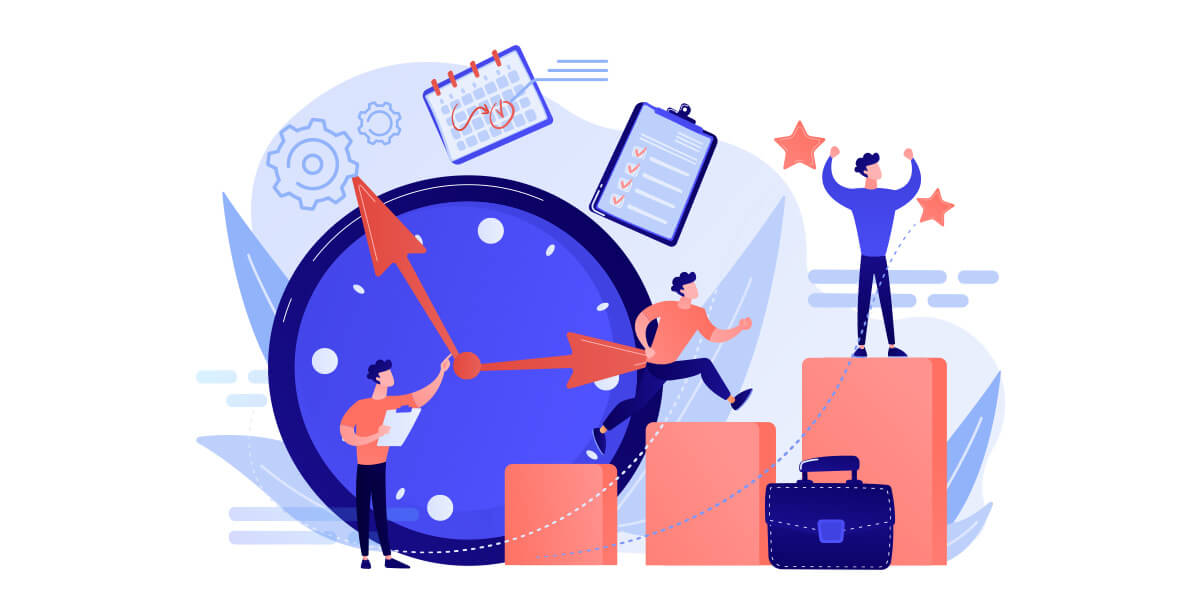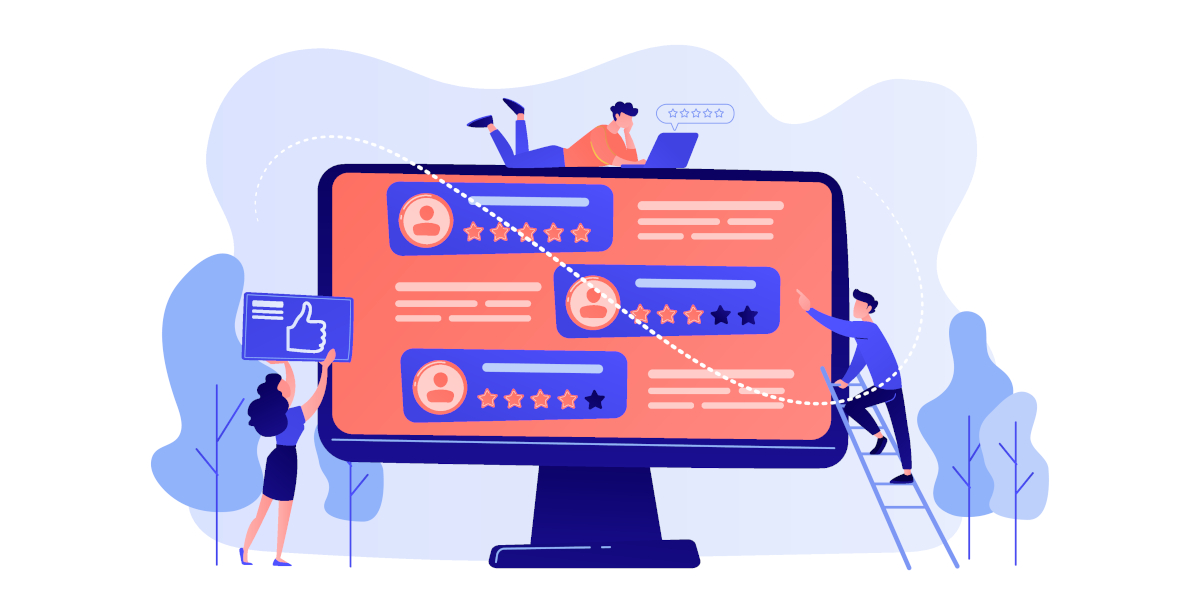If your company’s performance has hit a disappointing plateau, you’re likely wondering how to increase employee productivity.
Here’s a little secret: most office workers are productive for less than three hours a day. It’s no surprise that a workforce of part-timers struggles to meet expected performance levels.
It takes a good company-wide strategy to maximize your employees’ strengths and motivate them to work hard every day. Luckily, this guide is just what you need to get the ball rolling.
What is Employee Productivity?
Put simply, employee productivity measures how much work an employee is doing on company time. It’s an easy way to keep track of your employees’ workflow in terms of –
- Efficiency – how well they’re using their time
- Quality – whether their work meets expectations
- Quantity – how many tasks they can get done
But there’s more to it than that.
Monitoring employee productivity provides insight into whether your company can meet its goals. Think of this metric as your company’s engine – when it breaks down, the business can’t run. Inversely, high productivity means your business can expand faster than ever.
Why Improve Employee Productivity?
There’s no question that a high-performing workforce is necessary for your business to thrive. But is it worth it to figure out how to increase employee productivity?
It may be tempting to write off unproductive employees and fill their roles with motivated candidates. However, investing in current employees may be more cost-efficient than hoping new ones will perform better.
There’s much to be gained from taking charge of your employees’ productivity –
- More Profitable Workforce – Efficiency travels upward. An efficient team makes the whole organization perform better overall. The more productive your employees, the more their work pays for the resources you’ve devoted to them.
- Capacity for Innovation – When your employees aren’t struggling to get through the minimum, they have mental energy to spare for creative problem-solving. Innovators drive evolution in your company – they’re your first line of defense against stagnation.
- Better Work Relationships – Conflict is inevitable when teammates feel that some are working harder than others. An effective employee productivity strategy ensures that everyone is contributing equally. And everyone gets along better with people they can trust.
- Lower Turnover Rates – Most reasons for low productivity revolve around dissatisfied employees. A highly motivated, highly engaged workforce is less likely to leave in search of better prospects. Higher retention rates save you money and resources in the long run.
- Competitive Edge – Employees on their A game consistently work fast, deliver quality, and embody company values, making your business look good. Better yet, a full team of productive employees can meet market demands quicker than competitors, giving you a head start.
7 Strategies to Increase Employee Productivity
As convincing as those points are, you know it’s no simple task to rework your strategy from the ground up. But knowing where to focus your efforts is half the battle.
These seven tips will show you how to increase employee productivity in your company.
1) Track Employee Productivity
The days of manually crunching numbers once a year for performance reviews have long passed. If you’re not using software to track productivity, you’re losing out on technology that successful companies have relied on for years.
An employee productivity tracker makes your workers’ activity transparent. Analyzing productivity data in real time, these apps help you optimize your employees’ performance with ease. When problems crop up, managers can see exactly where things are going wrong and provide immediate support.
Not only do productivity trackers keep everyone updated, but they also motivate employees to put their best foot forward.
2) Set Performance Goals and Milestones
Without a concrete, specific action plan, your employees may not understand what’s expected of them. That’s why setting performance goals is a crucial step in how to increase employee productivity.
To foster innovation, initiative, and realistic expectations, empower your team to create their own KPIs and SMART goals. Putting employees in the pilot seat gives them the freedom to do the job they love – with full accountability.
3) Implement Continuous Feedback
Timely feedback can make all the difference in improving employee productivity. It’s hard to know your strengths and weaknesses when they’re constantly evolving and the last feedback you received was months ago. All your employees need is a bit of guidance to show they’re on the right track.
A continuous feedback loop is the perfect strategy for the job. Through regular one-on-one and group meetings, managers and their teams can stay on top of performance goals.
4) Train Better Managers
Improvement doesn’t fall only on your employees’ shoulders, though. Don’t dismiss the possibility that your managers may be holding them back.
Good managers know how to increase employee productivity and build good relationships with their team. But it’s a company effort to bring your managers up to that level.
Regular pulse surveys will let your managers know when employee motivation is flagging. Using the results, you can create actionable steps and offer training opportunities to build your managers’ leadership skills.
5) Provide Opportunities for Growth
Training programs are a straightforward way to increase employee productivity, closing skill and knowledge gaps in your team.
Courses and workshops on the latest tech and industry standards will keep your employees up to date. But you can also support the development of soft skills like time management, organization, and communication.
Invest in your employees’ futures – they’ll thank you for it by doing their jobs better.
6) Reduce Time-Wasters
No discussion on how to increase employee productivity is complete without mentioning the bane of all work: distractions.
It may sound like a no-brainer, but these accumulating obstacles can affect your workforce in ways you don’t expect. Emails, messages, and poorly timed meetings can pull your employees out of the zone instantly. And after an interruption, it takes 23 minutes to refocus on average.
If your office is a hive of activity, encourage teams to turn off notifications when they need to lock in. Be efficient and economical with meetings – every moment in a meeting is one where your employees aren’t making progress.
7) Boost Employee Engagement
This one shouldn’t surprise you. If you’re stumped on how to increase employee productivity, look closely at how your employees feel about their work.
According to Gallup, low employee engagement can increase turnover by up to 43%. If your employees aren’t motivated or passionate about the work they do for you, they’ll look somewhere else. So, make it a priority to improve your employees’ experience in the workplace.
But don’t just guess what they want. Use surveys, meetings, or continuous improvement boards to ask them directly and democratically.
Upgrade Your Employee Productivity Today
The secret for how to increase employee productivity is at your fingertips. nGAGE at Work will help you process productivity data in real time, and it won’t stop there. It’s high time to automate every aspect of your performance management strategy.
Take the plunge now and get ready to unlock your workforce’s full potential.

